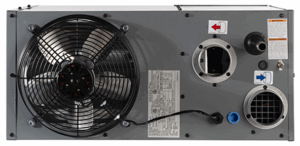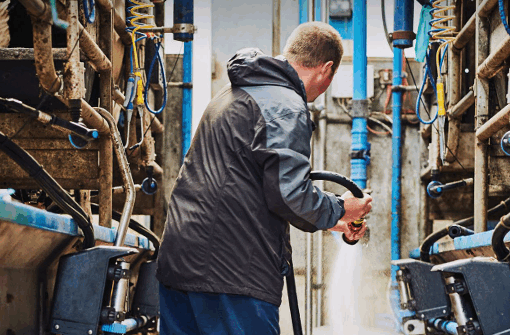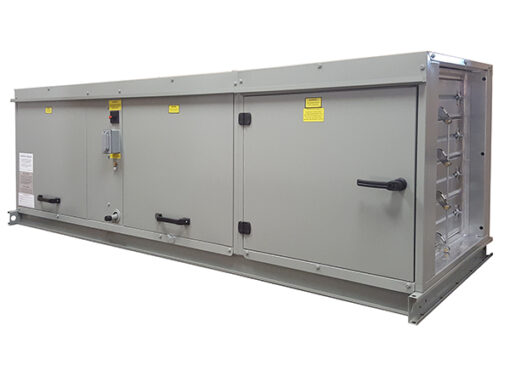What Is Separated Combustion?
In standard gas-fired unit heaters, combustion air is pulled from inside the building. This setup works well in clean, controlled spaces, but in dusty, dirty, or fume-filled environments, it can shorten equipment life and reduce performance.
Separated combustion solves this by drawing combustion air directly from outside the building through a dedicated intake. This provides the burner with a clean and consistent air supply, regardless of indoor conditions.

Why It Matters
Many industrial, commercial, and agricultural buildings have airborne particles, fumes, and fluctuating air pressure. These factors can clog burners, corrode components, and create inconsistent combustion in traditional open-flame units.
When combustion air is pulled from inside:
- Dust and debris may enter the burner
- Negative building pressure can destabilize the flame
- Fumes from chemicals or machinery can pose safety hazards if ignited
Over time, this leads to:
- More frequent maintenance
- Reduced equipment lifespan
- Higher fuel costs
- Less reliable heating performance
Key Benefits of Separated Combustion
-
Cleaner Air Means a Cleaner Burner
Since combustion air is drawn from outside, separated combustion units avoid exposure to indoor contaminants like dust, fibers, or exhaust fumes. This helps keep the burner cleaner and reduces the chance of blockages or poor combustion.
-
Longer Equipment Life
With fewer corrosive elements entering the combustion chamber, components such as heat exchangers and ignition systems last longer. This results in less downtime and fewer replacement costs over the life of the unit.
-
Ideal for Dirty or Dusty Environments
Warehouses, manufacturing plants, and auto shops often have poor indoor air quality. Separated combustion units are well-suited for these conditions, helping the system stay clean and efficient.
-
Consistent Operation in Negative Pressure Conditions
In buildings with exhaust fans or ventilation imbalances, indoor air pressure can become negative. Standard heaters may struggle to maintain a steady flame in these situations. Separated combustion units are unaffected because they use a sealed, independent air source.
-
Improved Fuel Efficiency
A cleaner and more stable combustion process leads to better energy performance. With fewer service calls and more consistent heating, you get more value from every fuel dollar.
Facilities that Commonly Use Separated Combustion Heaters
Facilities that need separated combustion heaters are typically those where the indoor air is contaminated, humid, dusty, or where maintaining clean indoor air quality is critical. These heaters draw combustion air from outside the building and vent exhaust gases outside, preventing indoor air contamination and improving combustion efficiency. A few examples of these types of facilities are:
- Automotive Repair Shops/Garages
- Welding Shops/Fabrication Facilities
- Wood Shops/Sawmills
- Paint Booths/Finishing Areas
- Wastewater Treatment Plants
- Greenhouses
- Animal Facilities/Barns
- Chemical Processing Plants
- Warehouses with Poor Ventilation
- Cold Storage Facilities/Freezers
Conclusion:
If your facility deals with dust, fumes, or pressure imbalances, separated combustion unit heaters offer a strong advantage in both performance and durability. Although the initial cost may be slightly higher, the long-term savings in maintenance and energy can make them a worthwhile investment.
Need help deciding if separated combustion is the right fit? ChopAir is here to evaluate your facility and recommend the best solution for your needs.



